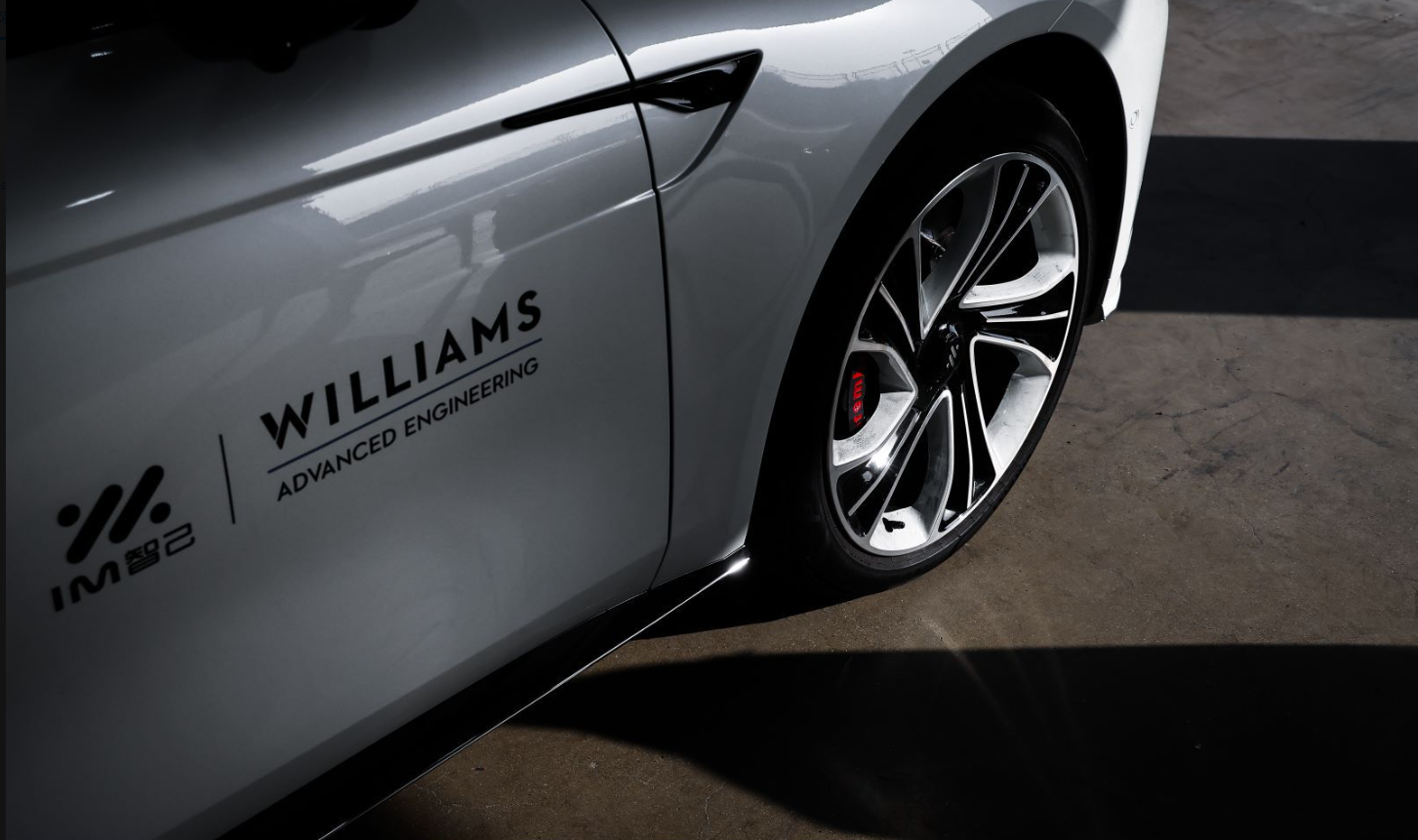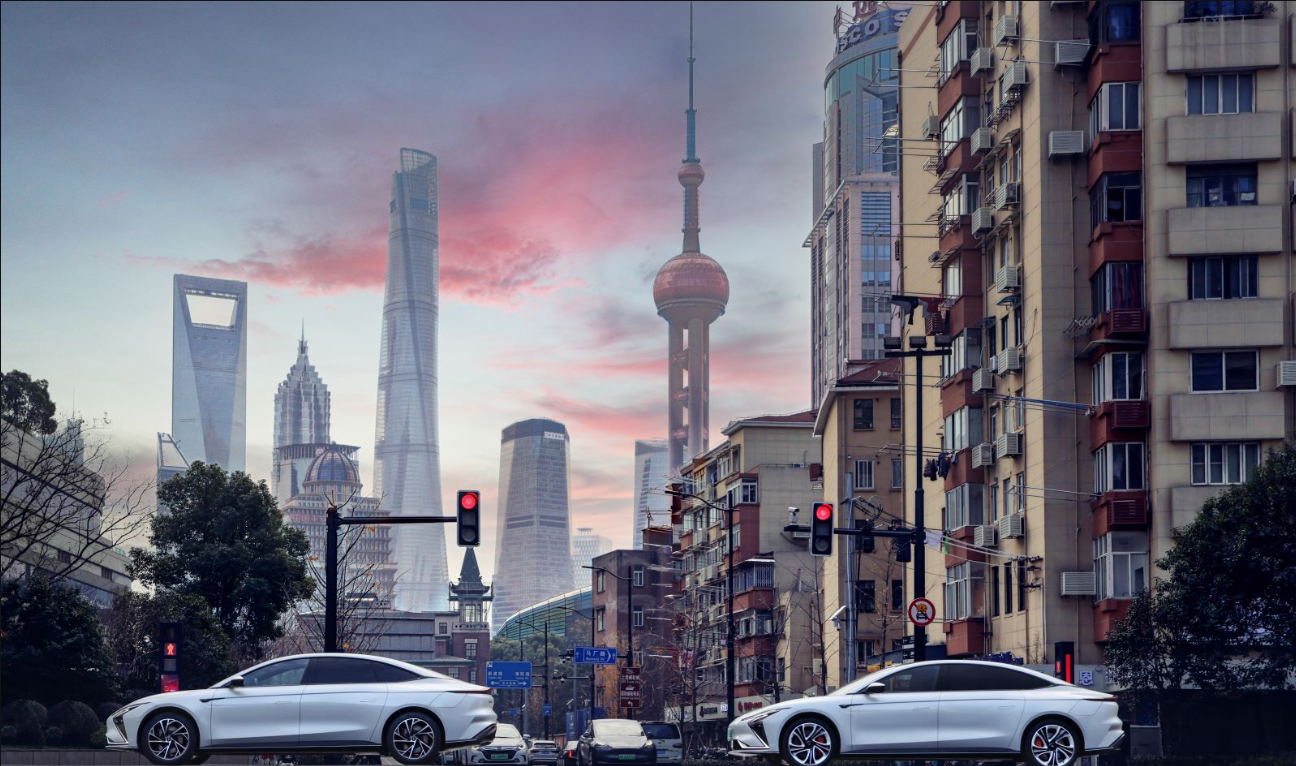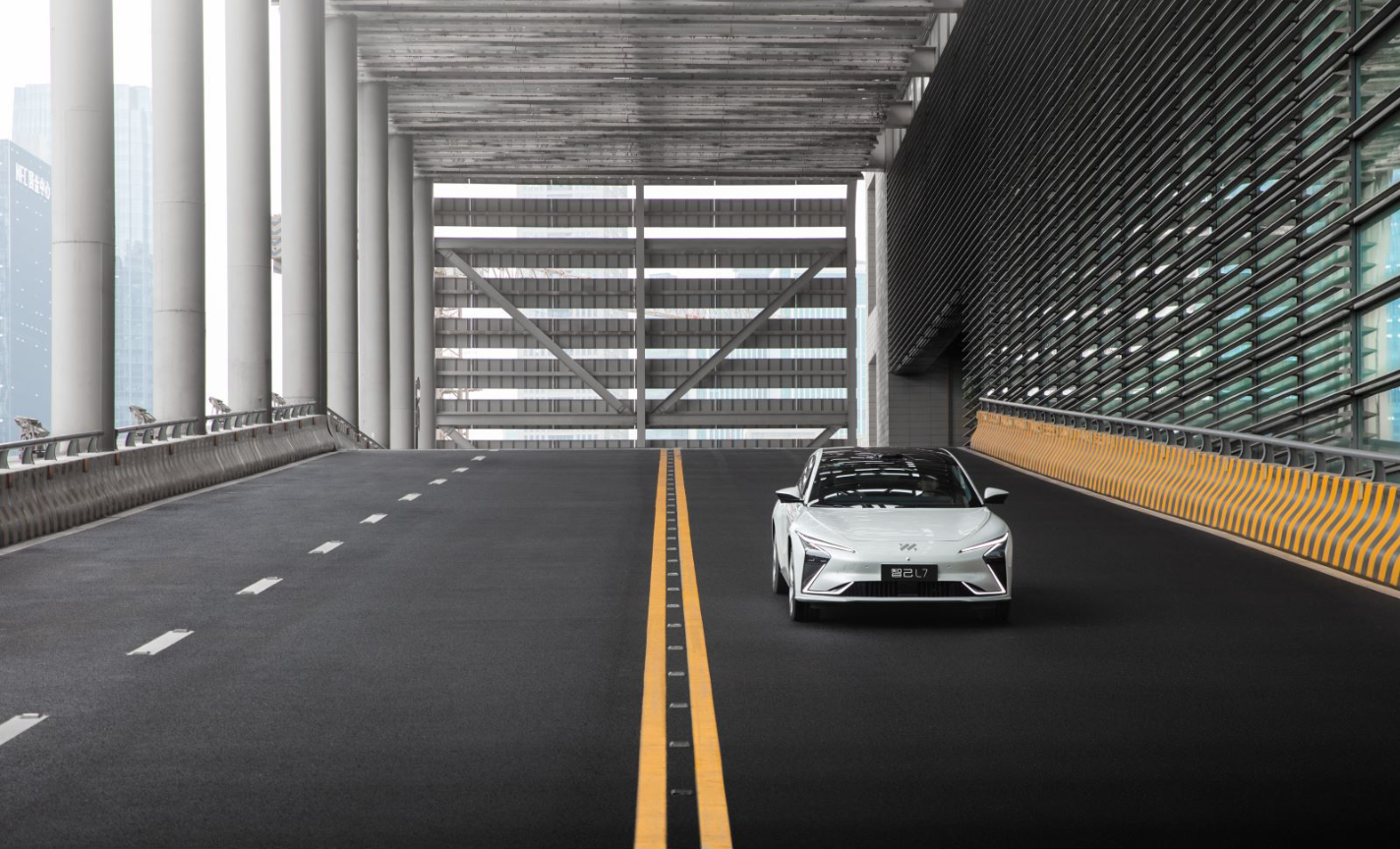Smart Electric Vehicle Product, What to Do When Newcomers Take the Lead?
Author: Zhu Shiyun
Editor: Qiu Kaijun
At the end of 2022, the SAIC Group’s “Project One” smart vehicle [IM auto] unveiled its second product: the mid-to-large-size luxury SUV IM LS7. During half a month, the pre-sale price within the range of 350,000-500,000 yuan has already received over 7,000 orders. The first product, IM L7, achieved sales of 5,000 vehicles in just six months since its official delivery.
Of course, such sales cannot be compared with the leading players of the new energy vehicle industry, but it has great practical significance for IM and SAIC: to achieve good sales performance within the price range of 350,000-500,000 yuan, which has been a “price ceiling” that China’s domestic automobile brands have not been able to break through in the past 30 years, and to become a confidence booster for SAIC to continue its transformation and move forward.
In 2022, IM officially began its journey on the high-end pure electric smart racing track. Its current achievements rely on “being different while staying the same” as other players such as new energy vehicle manufacturers[,] among others.
“Project One” IM
The SAIC Group’s “Project One” is the most well-known label for IM in this industry.
As the “Project One,” IM has technical advantages and resource endowments that are unmatched by people like “Wei Xiao Li,” and does not need to struggle on the “life and death line.” However, on the other hand, the inherent cost structure of SAIC, the knowledge structure and thinking mode of traditional automotive organizations, and the special organizational mechanisms of state-owned enterprises make it impossible for IM to become a purely luxury pure electric intelligent vehicle brand.
While participating in fierce market competition, IM needs to explore the transformation of SAIC Group’s electric and intelligent products, and serve as a test field for the transformation into a “user-oriented high-tech enterprise”.

Therefore, the start of IM is full of experimental nature.
IM is cross-industry led by the SAIC Group, Zhangjiang High-Tech, and Alibaba, holding 54%, 18%, and 18% of shares, respectively, while leaving 10% to employees for a stock platform and the original data rights plan for Shigu users.
This joint venture method and equity setting are very interesting.
In the past few years, among new energy vehicle brands that have emerged, the equity structure has either been a combination of founders and investment companies, or traditional automotive companies with absolute control waiting for IPOs in the future.IM shareholders combine manufacturing enterprises and technology enterprises. In addition to capital investment, IM has added the imagination space of technology cooperation for how large Chinese enterprises can form synergy.
The “Core Employees + YSG User Data Equity Plan” equity platform supported by real equity ownership is the world’s first initiative by IM. Among them, “YSG” completely distinguished IM from other user-oriented enterprises focused on operation.
Compared with other brands, which establish direct connections with users, respond quickly to user needs, and carry out some creative even business co-creation around the car lifestyle, YSG makes IM a true user-oriented enterprise:
Users provide data resources for enterprise development and share the company’s development profits in a tangible way.
Creativity determines the starting point of innovation, and top-level design determines the ceiling of innovation landing.
By implementing such a deep mechanism innovation reform, it is clear that SAIC hopes that “Project One” will reach a high enough level in the field of pure electric intelligent automobiles and user operations. It also means that IM will be a long-termism enterprise and brand, not swayed by short-term sales and a period of time.
How to Build High-end Electric Cars?
Does the lack of hot sales mean that IM will gain nothing in 2022?
According to “Electric Vehicle Observer”, like all technology and capital-intensive manufacturing industries, the core barrier of pure electric intelligent automobiles is still established in the process of actual mass production and operation.
After launching two mass-produced products, IM completed the definition of high-end intelligent electric vehicles and the accumulation of the first stage of manufacturing.
In terms of product definition, IM insisted on the driving and control genes and even proposed another OS that is equally important as the intelligent operating system (operation system) from its own luxury brand positioning. It includes the original chassis power and control architecture.

In the era of fuel vehicles, due to the large and complex mechanical structures, the higher the driving control quality, the greater the investment in technology and configuration, and the higher the vehicle price. Therefore, the style of luxury brands has always been reflected by driving control style, and the ability to adjust control parameters has also become the core technology barrier of the global automotive industry.In the era of intelligent electric vehicles, the simplified structure and electric characteristics make it easy for electric vehicles to achieve the expensive power performance of the fuel vehicle era. However, at the same time, there is a higher demand for driving control quality to safely and comfortably unleash stronger power and acceleration performance on the road.
Whether it is the standard AKC rear-wheel steering system, Brembo four-piston brake system, or the reconstruction of the wheel system to withstand 1 G of turning acceleration, they are all the “muscles” that the Roewe brand, as the culmination of SAIC’s car-making capabilities, shows off, and the highest level of China’s automotive technology and strength showcased in the “core arena” of driving control.
Roewe’s L7 broke the Guinness World Record for electric car drifting at the Tianma Mountain Circuit when it was launched. In November 2022, the L7 topped the list of the fastest mass-produced electric cars at the Zhejiang International Circuit in China with a lap time of 1 minute 42.212 seconds, exceeding the time of Mercedes AMG EQS and Porsche Taycan.
In 2022, Roewe won the tag of “smart electric + high-end + driving control”, establishing brand momentum. When Roewe launches new models in the future, on the one hand, there is no need to introduce the brand features too much, and on the other hand, by lowering the price range of existing products slightly, it can gain a broader space.
How to make high-end intelligent cars?
While showcasing driving control technology on electric cars, SAIC’s intelligent “ambition” is self-evident on the Roewe L7 and LS7.
In June 2022, just two months after the launch of the L7, Roewe came up with a new standard for five intelligent cars under the name of “New World Intelligent Origin”: intelligent driving, scenario intelligence, social capability, continuous evolution capability, and multi-dimensional creation.
Breaking it down, these five standards are the functions and capabilities that all intelligent car brands frequently mention.
However, the only product that can truly achieve these five standards at the time was the Roewe L7, until the LS7 was launched at the end of 2022.The core difference between IM and other mass-produced intelligent automotive products lies in its unique SOA atomic software architecture and cross-domain integration, which breaks down the barriers between hardware and functions, links every atomic unit of the “whole vehicle,” and upgrades the vehicle from functional intelligence to scenario intelligence.
Currently, most intelligent automotive products priced around 400,000 yuan have adopted domain-controlled centralized electronic electrical architectures. IM is no exception, but compared with other domain controllers, it has achieved deeper cross-domain integration:
At the application layer, the core functions of the entire vehicle chassis status, driving experience, braking feel, human-machine interaction, and other functions under the control of the vehicle, smart driving, and smart cabin management can collaborate across domains and be compatible with each other, forming new functions according to different application scenarios.

At the hardware level, the vehicle equipped with an intelligent driving hardware system consisting of 12 ultrasonic radars, 11 HD perception cameras, 5 millimeter-wave radars, and 2 high-precision positioning units can be upgraded by exchanging and adding NVIDIA Orin and LiDAR in the future to achieve higher-level intelligent driving capabilities.
Such core hardware upgrades currently require a complete remodel of the entire vehicle for the vast majority of brands and models. IM’s iO origin architecture was designed with the goal of software upgradability and hardware pluggability from the beginning.
This ability is commonplace on home computers, but to achieve it on a more complex and high-speed, high-security automobile poses unprecedented challenges for software, hardware, and automotive companies, which means that the underlying architecture, upper-layer applications, work philosophy, and industrial chain cooperation model all need to be completely restructured.
Obviously, SAIC’s hope for IM is not to “patch up” intelligent functions at the application layer, but to thoroughly innovate the construction of new intelligent automotive products from the ground up.
Of course, this is not an overnight task.
Currently, many traditional automotive companies, including Volkswagen, are still struggling in the quagmire of software; new automakers with internet genes mostly have limited breadth and depth of integration below the application layer; and SAIC’s own Zero Bundle Technology has only completed the first step of building a backbone architecture network for basic standard protocols.The iO origin architecture and the overall software architecture completed by IM are much stronger in terms of the “marginal effects” of development efficiency, maturity, and collaboration compared to the body architecture when developing derivative models. The marginal costs of many software are even zero.
This is the way to make intelligent electric vehicles.
How does high-end pure electric intelligent car operate?
User operations are the biggest difference between the electric intelligent car era and the field of fuel cars beyond the product. IM is very advanced in user operations.
Iterative upgrading is the core feature of intelligent products driven by user data. Therefore, user data rights are an unavoidable topic.
To this end, before the listing of L7, IM announced the original stone valley user data rights plan tied to 300 million original stones with a 4.9% equity benefit plan. IM’s registered capital of RMB 10 billion means that the current value of 300 million original stones is RMB 490 million, with each block priced at RMB 1.68.
“Automobiles have high value and low frequency, and the Internet has low value and high frequency, making it difficult for automakers to manage customers.” IM CEO Liu Tao once told “Electric Vehicle Observer”, “The original stone valley makes the stickiness between businesses and customers very high, giving us the opportunity to do data-driven deep operations.”
The original stone valley enabled IM to move from the “information internet” to the “value internet” ahead of its time.

In November 2022, IM’s first season of “original stone exchange” officially launched. Among the exchangeable products, 4,999 original stones can be exchanged for an iPhone 14 Pro.
When turning user data into real-value equity, it also becomes the fuel for IM’s evolution in intelligent driving and cockpit development.
On December 20, 2022, IM’s second product LS7 started pre-sale and announced that it will be equipped with dual laser radar, Orin chip, and the IM OS 2.0 car system, which will achieve full-area intelligent fusion, mobile phone and car interconnection, and other functions.
User businesses and intelligent electric vehicle operations are not pioneered by IM. But only IM has completed the revolutionary transformation – by returning the value of user data to users in real gold and silver.In 2022, for IM, being the “top stream” is not the goal. Instead, it will be a year of solid work, focusing on learning through practice, and accumulating experience in production and market transformation.
In the automobile industry, which is characterized by long cycles and heavy technology, transformation is not achieved overnight. Behind each car model and sales figure lies a solid step forward in the transformation process. With the expansion of the product matrix and the scale of sales, IM, guided by a long-term vision, has a promising future.
–END–
This article is a translation by ChatGPT of a Chinese report from 42HOW. If you have any questions about it, please email bd@42how.com.
